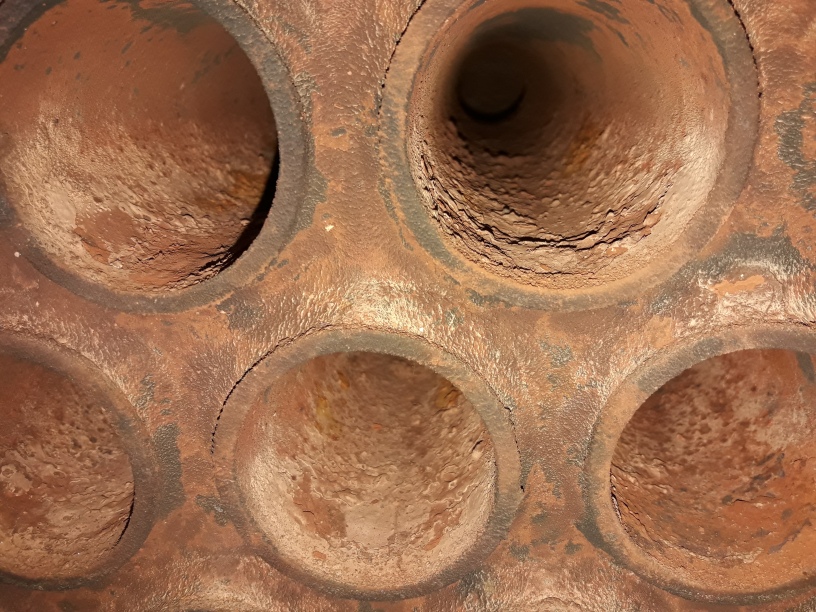For carbon dioxide attack, carbon dioxide dissolves in water to form a weak acid called carbonic acid. It would dissolve the cement matrix. However, the amount of carbon dioxide from the atmosphere is usually not sufficient to cause harm to concrete structures until additional source of carbon dioxide is available (e.g. decaying vegetable matter).
Carbonation is the process of converting alkaline hydroxides in concrete to carbonates by reaction with carbon dioxide. The significance of carbonation lies in the reduction of pH of pore water in concrete structure from 12-13 to 8-9 so that it drops the protection to steel reinforcement. The process takes place at concrete surface and spreads inwards. The passive nature play an important role in steel corrosion as it prevents corrosion even in the presence of water and oxygen. This passive nature is derived from a stable and thin layer of iron oxide formed at the surface of steel reinforcement. However, if the pH of concrete is dropped, this passive oxide layer becomes unstable and corrosion may start once water and oxygen supply is available


